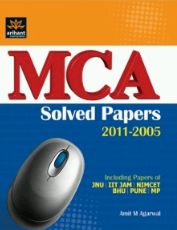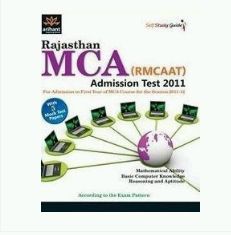|
#2
31st January 2013, 01:59 PM
| |||
| |||
| Re: Thapar University MCA Entrance Exam
The Thapar University was founded in 1956 by Karam Chand Thapar. The institute was established in 1956. The institute was granted the status of a Deemed University in 1985 by the University Grants Commission. The Thapar University conducts an entrance exam for giving admission into MCA course the details of the entrance exam are as follows: Thapar University MCA Entrance Exam: Eligibility: The candidate should have Recognised Bachelors degree of minimum 3 years duration in any discipline with Mathematics at least at 10+2 school level. OR The candidate should have Recognised Bachelor’s Degree of minimum 3 years duration in any discipline with Mathematics as one of the subjects. Number of Seats: 120+60 (for Chandigarh Campus) How to Apply: The application form is available on the Website of Thapar University. Then fill the complete details and then take the print out of the form. Paste a recent passport size photograph on it. The application fee Rs. 2500 can be paid through Demand Draft. In the form of Demand Draft (DD), the DD of requisite amount should be made in favour of Thapar University, Patiala and payable at Patiala. The DD must reach the University on or before the prescribed date. The candidates depositing Earnest money, total fee through SBOP must enter complete details in ‘Fee Confirmation Slip’ (FCS) available at the official website of the TU. Exam Pattern: The Thapar University MCA entrance exam pattern is as follows: Duration: 3 hours Number of questions in the entrance test: 150 questions The paper contains the questions from the following topics: Mathematics (60 Questions) Computer Awareness (50 Questions) Analytical Ability, Communication Skills and General Knowledge: (40 Questions) Syllabus: The syllabus of the MCA entrance exam is as given below: Section-I: Mathematics (60 Questions) Geometry: Two-Dimensional; straight lines, circles and conic sections, Three-Dimensional; straight lines and spheres. Algebra: Set theory, Relations, Mappings and its applications, Permutations and Combinations. Calculus: Limits, Continuity and Differentiability, Rolle's and Mean value theorems, Differentiation, Partial Differentiation, Maxima and Minima of functions of one and two variable. Successive differentiation. Integration by using substitution, partial fraction and by parts, Definite integral and its properties, Applications of definite integral to evaluate length and area of simple plane curves Vector Analysis: Scalar and vector products of two , three and four vectors and their applications. Statistics, Probability and Linear programming: Measures of Central tendency, Dispersion, Skewness and Kurtosis. Correlation and Regression. Basic concepts of probabiliy, Conditional probability, Baye's theorem, Discrete and continuous distributions (Binomial, Poisson, and Normal distributions), Fundamentals of linear programming problems, Graphical solution, Simplex method and its variants Matrices:Types of matrices rank of a matrix, solution of system of linear equations, Cayley Hamilton theorem, Inverse of a matrix, Determinant and its properties. Numerical Analysis: Solution of non-linear equations using iterative methods, Interpolation (Newton's, Lagrange's and Forward formulae), Numerical Integration (Trapezoidal and Simpson Rule). Section-II: Computer Awareness (50 Questions) Computer Basics :Organization of a computer, Central Processing Unit (CPU), input/output devices, computer memory, memory organization, back-up devices, Categories of Computers. Data Representation :Representation of characters, integers, and fractions, binary and hexadecimal representations, Binary Arithmetic: Addition, subtraction, division, multiplication, floating point representation of numbers, normalized floating point representation, Boolean algebra: truth tables, Venn diagrams. Basics of C Programming and Operating Systems:Computer programming in C : data types, loop and control statements, functions. Fundamentals of operating systems: multiprogramming, multitasking, Multiprocessing and time sharing systems. Networking and Internet:Categories of Computer Network, Network topologies, Network media, Concepts of LAN, MAN and WAN, Search Engines, Basic internet applications. Section-III: Analytical Ability, Communication Skills and General Knowledge: (40 Questions) The questions in this section will cover logical reasoning, quantitative reasoning, visual-spatial reasoning and Communication skills. This section shall also contain questions to test the general knowledge about business, finance, industry, transportation, scientific inventions, information technology, governance, healthcare, cultural dimensions etc Question paper: The Thapar University MCA entrance exam paper is in the following attachment: Books: The MCA entrance reference books are as here: Complete Guide to MCA 2013 Amit M Agarwal  MCA Solved Papers 2011-2005 Amit M Agarwal  Rajasthan MCA (RMCAAT)Admission Test Expert Compilation  Important dates: The tentative dates for the Thapar university MCA entrance exam are as given below for the session 2013: The last date for receipt of completed application forms: First week of June 2013 The entrance exam date: Mid or last week of June 2013 The date of publishment of result: First week of July 2013 Contact details: Thapar University P.O Box 32, Patiala, Pin -147004 Phone: +91-175-2393021 Fax: +91-175-2364498, 2393020 Email: registrar@thapar.edu Home page: The home page of the Thapar University looks similar as the image given below:  |